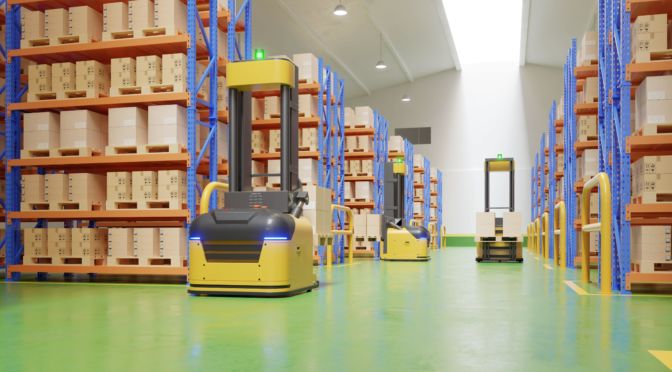Robotic Arms and Autonomous Mobile Robots are the two recent technology leading a pack in various verticals. To pick the right lens, we need to focus on two basics such as Fov (field of view) and aperture (capable of controlling the image’s brightness). We help you choose the right image sensor/embedded camera for robotic Arms and Autonomous Mobile Robots in this podcast.
4 questions this podcast will answer:
01
Why do you need to deploy Robotics Arms Autonomous Mobile Robots camera application and Robotics Arms in your vertical?02
What are the five crucial camera sensor requirements for Robotic Arms and Autonomous Mobile Robots?03
What is an image signal processor (ISP), the need and advantages of ISP in Robotic Arms and Autonomous Mobile Robots cameras?04
How to pick the right optics for your image sensor and computer vision-based embedded camera?
Subscribe to VisAI Labs' Newsletter
Relevant link:
Podcast Transcript:
Early adoption of technology is part of the differentiation between being a pioneer and a must-have for solution providers.
Autonomous mobile robot technology is no different in this case, and solution providers are rapidly or rigorously pursuing this technology in order to gain their market leadership.
Mobile robots can operate 24/7 in the warehouse or surveillance industry or surveillance applications in order to provide reliable and continuous output for the systems.
The agile technology for robotics arms is evolving as well in order to give better dexterity and reliability in the industrial solutions were also improving their real-time decision making skill.
Both these technologies require an accurate vision system in order to cater to complex applications, service and choosing the right images is a key to building a robust system for the different application.
Hi, this is Yogesh, and in today’s edition of unraveling the computer vision and edge AI for the real world, I shall be talking about choosing the right imaging system for the AMR or the autonomous mobile robots and the robotic arm applications.
Cameras are the most critical sensors in AMR and robotic systems with multiple imaging needs, for example, in AMR the camera might be used for the detection of vision and also for recording purposes as well as multi-camera systems for complete surrounding awareness.
While in robotic arms, the major decision-making is done based on the detection information we apply for the camera vision.
Both the systems being deployed in the moving environment where the target is moving or the system itself is moving.
High response rate or high frame rate for the camera becomes a critical factor here while designing camera systems for these applications, and the high frame rate from the camera needs to be complemented with a high-speed data interface that needs to be supported by the camera in order to transfer the data to the processing system.
Having said that frame rates can help us capture these moving objects, our images still need to be de-voided by motion blur for the direction systems to be reliable, and the technique of low exposure time or fast shutter speeds helps us here the idea is during the low exposure time the object would not have moved much; therefore we would have captured the image reliably, and deduction process or understanding process of that image shall be reliable.
So to summarize, fast frame rates and low exposure times are the key factors when it comes to choosing the right image sensor on the right imaging system for AMR and robotic arm application, camera link strud e cam which has a low exposure time capability and high frame rate capability would be an optimal solution for these applications.
STRUD e cam 20 is an IP67 HDR JSML camera with capabilities of data transmission up to 15 meters using the coaxial cable, thereby it can cater to the AMR and the robotic arm applications in different industrial environments.
Another usual requirement when it comes to autonomous mobile robot systems is the need for multi-camera imaging.
These systems usually have more than one camera working in sync with each other so that the system can be completely aware of its surroundings.
The decision is taken after processing the images from these multiple camera and synchronization is required with these multi-camera systems so that the systems see the same image from different angles simultaneously.
Usually, a trigger signal is used to achieve this synchronization functionality, so when selecting an image sensor for the system, one needs to be aware if it has a trigger functionality; therefore, we can build a reliable AMR system.
We discussed choosing the right image sensor for our application; now, the next step would be adding the right image signal processor to our sensor to achieve the right imaging solution for our main AMR system.
So why do we need an ISP here? Image sensors usually give out images in a raw format, and they do require corrections when the environment varies randomly. So the different image processing corrections and algorithms cannot be done in the sensor itself.
So, we require a controller, an ISP, or an image signal processor that offloads all these processes and works in sync with our image sensor to give our the best image quality.
The advantage of have an ISP is it offloads all these algorithms, all the processing from the processing CPU, and keeps them in the ISP so that the CPU is actually free for an induction or image vision applications.
So having discussed the ISP and sensor needs, the next design consideration would be the optics.
So selecting the lens is mostly dependent on the field of you that we require and the sharpness parameter like the focus and the depth of it while FOV is determined by how much our target object covers a frame of one particular frame, which intern determines the detection and the understanding capabilities of the system.
The depth of field and the focus parameters are important because only a sharp image can be reliably detected by the system.
So looking into all these comprehensive parameters while designing your imaging solution accelerates your product development and helps you reach the market faster.
This is Yogesh signing off from this edition of unraveling computer vision and edge AI for the real world.
Bye.





